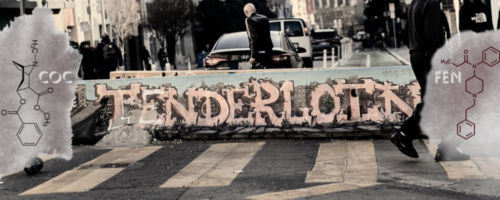What is SF Doing to Combat the Recent Surge in Unexpected Drug-Related Deaths?
By Gabriela De Anda
Recently, San Francisco has set up a new plan to battle the ongoing war on drugs. How effective this plan will be is up to the first responders.
The epicenter of the city’s ongoing drug-related crimes and deaths is one of the most ethnically and economically diverse areas of San Francisco, the Tenderloin District.
With refugees, homeless encampments lining the streets, and open-air drug markets raining down death tickets, the Tenderloin long ago lost the days of clean, safe streets. For as long as I can remember, it’s always been like this. New efforts have been made to cure this drug epidemic. The city has recently started its new initiative, “Operation Overdrive.”
This step in fighting against the abusive hold drug traffickers have on our community is calling in support from the National Guard, Sheriff’s Office, and California Highway Patrol to assist our San Francisco Police Department with patrolling the streets. Their main goal is combating drug-related violence and overdoses, mostly related to the fentanyl crisis.
$20 million of funding, which was previously distributed to wellness hubs, is now potentially being diverted to the cities to pay for changes in drug court. These changes allow longer jail sentences after two arrests. This can potentially reduce the number of substance abusers out on the streets and decrease skyrocketing overdoses. San Francisco is already on track to having its worst year, with more than 450 deaths from overdoses.

This forced-prison reform is under some scrutiny due to statistics of withdrawals and overdoses after offenders are released from jail.
The city hopes once offenders are in the system they will start drug reform programs that keep them from having withdrawals by using buprenorphine and methadone.
With this change, the Department of Justice is trying to mandate drug counseling and support to those currently on dangerous substances. With this new initiative they can try to rehabilitate drug abusers, remove them from the streets and place them within a safer environment over a longer period of time. Keeping them off the streets for multiple months or even a year greatly reduces the probability that they will end up back on the streets, relapsing and potentially having a fatal overdose.
The reason shorter terms are worse is that when an abuser goes to jail they are usually going cold turkey (with no medical assistance to fight against withdrawals). This means their body may have severe withdrawals, depending on what kind of substances they were abusing while on the streets. These withdrawals can lead to severe discomfort such as vomiting, muscle aches and depression. Once they are let out, after spending some time off of their drug of choice, they generally revert back to substance abuse. Now, the risk is that they won’t consider the amount they are consuming, which leads to an increased risk of having a fatal overdose.
San Francisco’s effort to prevent further overdose-related deaths can be a step in the right direction in the struggle with addiction. Much can be said of the past and how similar strategies have been put in place, but never really had a substantial impact on our community’s progress toward cleaner and safer streets. Hopefully, Tenderloin residents will begin to see progress in solving these problems and feel safer in the comfort of their communities.
